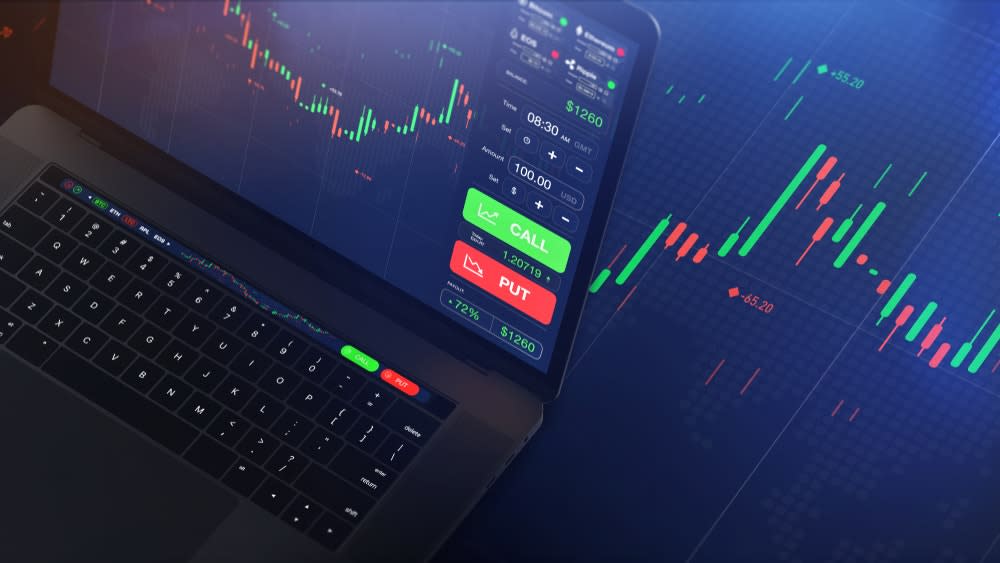Regulatory Shifts Push European Traders From CFDs To Futures Following The US

In response to regulatory changes, European traders and brokers are increasingly favoring futures and options over contracts for differences (CFDs), as revealed in a recent Acuiti survey.
A report by Finance Magnates on Tuesday disclosed that over half of European retail brokers are contemplating the introduction of futures and options as alternatives to retail over-the-counter (OTC) instruments like CFDs. This transition is linked to the recent emergence of futures prop trading platforms.
Read Next:
Unlock a $400 billion opportunity by investing in the future of EV infrastructure on this startup already valued at $50 million.
A billion-dollar investment strategy with minimums as low as $10 — you can become part of the next big real estate boom today.
Regulatory constraints on CFDs have been intensifying across Europe, prompting traders to explore other instruments. The European Securities and Markets Authority enforced stringent restrictions on the industry in August 2018, capping the leverage offered to retail clients.
Despite these regulatory changes, “those who have preferred to trade CFDs have continued to trade CFDs,” stated Mahesh Sethuraman, Saxo's Asia Pacific Head of Trading and Investing. He noted that there’s no evidence of Saxo clients abandoning CFD trading for futures.
Nevertheless, futures trading is becoming popular among stock brokers, particularly in the US where CFDs are prohibited. Prop trading firms offer a simulated environment for US traders to familiarize themselves with CFDs instruments. These firms have recently encountered obstacles as MetaQuotes, the creator of MetaTrader, reportedly clamped down on the industry.
Trending: Warren Buffett once said, "If you don't find a way to make money while you sleep, you will work until you die." These high-yield real estate notes that pay 7.5% – 9% make earning passive income easier than ever.
Consequently, prop trading firms are transitioning to MetaTrader alternatives, contributing to the rise of futures trading platforms. Unlike other OTC instruments, futures trading, being highly centralized, provides a distinct model.
While futures trading offers numerous benefits over FX and CFDs, it also poses challenges for traders, brokers, and prop trading firms. Anya Aratovskaya, an FX Consultant, pointed out that futures trading is more complex compared to FX and prop firms typically incorporate level 1 data in the price, with traders often required to pay for level 2 data.
The shift from CFDs to futures and options is significant, as it reflects the impact of regulatory changes on trading behaviors. This transition also underscores the adaptability of traders and brokers in response to industry changes. The rise of futures trading platforms could potentially reshape the trading landscape, offering new opportunities and challenges for all market participants.
For traders looking to maximize their potential, choosing the best options trading platform is essential. Platforms vary in terms of fees, features, and ease of use, and selecting one that aligns with the trader’s goals and strategy can significantly impact performance. The right platform can provide access to advanced tools, real-time data, and seamless integration with mobile devices, allowing traders to react quickly to market changes and capitalize on opportunities. As options trading becomes increasingly popular, especially among those transitioning from CFDs, evaluating the available platforms is a crucial step in taking full advantage of the benefits these instruments offer.
Read Next:
Stuck trading at business hours? This platform empowers retail investors with 24-hour trading access to manage your financial future whenever it suits you.
If you invested $100K in Nivida during COVID, you would’ve been a millionaire today. Get it as your free stock on this platform today.
"ACTIVE INVESTORS' SECRET WEAPON" Supercharge Your Stock Market Game with the #1 "news & everything else" trading tool: Benzinga Pro - Click here to start Your 14-Day Trial Now!
Get the latest stock analysis from Benzinga?
This article Regulatory Shifts Push European Traders From CFDs To Futures Following The US originally appeared on Benzinga.com
© 2024 Benzinga.com. Benzinga does not provide investment advice. All rights reserved.
